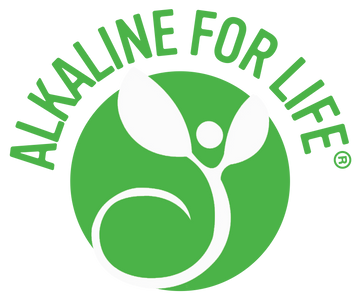Product References - Energized Multi
1. Cogswell, Mary E., et al. “Sodium and Potassium Intakes among US Adults: NHANES 2003–20081234.” The American Journal of Clinical Nutrition, vol. 96, no. 3, Sept. 2012, pp. 647–57. PubMed Central, doi:10.3945/ajcn.112.034413.
2. New York State Behavioral Risk Factor Surveillance System (BRFSS). Fruit and Vegetable Consumption, 2015.
3. CDC. “State Indicator Report on Fruits and Vegetables, 2018.” Centers for Disease Control and Prevention, 24 Oct. 2018, https://www.cdc.gov/nutrition/data-statistics/2018-state-indicator-report-fruits-vegetables.html.
4. https://www.ncbi.nlm.nih.gov/pmc/articles/PMC4818187/pdf/nihms755911.pdf
5. Data derived from: "Foods, fortificants and supplements: Where do Americans get their nutrients?" Journal of Nutrition 2011. 141:1847-185
6. Wallace, Taylor C., et al. “Multivitamin/Mineral Supplement Contribution to Micronutrient Intakes in the United States, 2007-2010.” Journal of the American College of Nutrition, vol. 33, no. 2, 2014, pp. 94–102. PubMed, doi:10.1080/07315724.2013.846806.
7. Nair, Rathish, and Arun Maseeh. “Vitamin D: The ‘Sunshine’ Vitamin.” Journal of Pharmacology & Pharmacotherapeutics, vol. 3, no. 2, 2012, pp. 118–26. PubMed Central, doi:10.4103/0976-500X.95506.
8. Agarwal, Sanjiv, et al. “Comparison of Prevalence of Inadequate Nutrient Intake Based on Body Weight Status of Adults in the United States: An Analysis of NHANES 2001-2008.” Journal of the American College of Nutrition ahead-ofprint (2014): 1-9.
9. Davis, Donald R. “Declining Fruit and Vegetable Nutrient Composition: What Is the Evidence?” HortScience, vol. 44, no. 1, Feb. 2009, pp. 15–19. journals.ashs.org, doi:10.21273/HORTSCI.44.1.15.
10. Buckley, Jessie P., et al. “Ultra-Processed Food Consumption and Exposure to Phthalates and Bisphenols in the US National Health and Nutrition Examination Survey, 2013–2014.” Environment International, vol. 131, Oct. 2019, p. 105057. ScienceDirect, doi:10.1016/j.envint.2019.105057.
11. https://www.cdc.gov/nutrition/data-statistics/sugar-sweetened-beverages-intake.html
12. Young, Lauren M., et al. “A Systematic Review and Meta-Analysis of B Vitamin Supplementation on Depressive Symptoms, Anxiety, and Stress: Effects on Healthy and ‘At-Risk’ Individuals.” Nutrients, vol. 11, no. 9, Sept. 2019. PubMed, doi:10.3390/nu11092232.
13. https://ods.od.nih.gov/factsheets/Folate-HealthProfessional/
14. Georgousopoulou, Ekavi N., et al. “Tocotrienols, Health and Ageing: A Systematic Review.” Maturitas, vol. 95, Jan. 2017, pp. 55–60. PubMed, doi:10.1016/j.maturitas.2016.11.003.
15. Office of Dietary Supplements - Biotin. https://ods.od.nih.gov/factsheets/Biotin-HealthProfessional/. Accessed 22 June 2020.
16. Office of Dietary Supplements - Boron. https://ods.od.nih.gov/factsheets/Boron-HealthProfessional/. Accessed 23 June 2020.
17. Complementary and Alternative Medicine - Penn State Hershey Medical Center - Vanadium - Penn State Hershey Medical Center. http://pennstatehershey.adam.com/content.aspx?productid=107&pid=33&gid=000330#:~:text=The%20best%20food%20sources%20of,commonly%20found%20in%20nutritional%20supplements. Accessed 23 June 2020.
18. Data derived from: "Foods, fortificants and supplements: Where do Americans get their nutrients?" Journal of Nutrition 2011. 141:1847-185
19. https://pubmed.ncbi.nlm.nih.gov/1728807/
20. U.S. Department of Agriculture, U.S. Department of Health and Human Services. Dietary Guidelines for Americans 2010. 7th ed. Washington, DC: U.S. Government Printing Office. 2010.
21. Youn, Grace. Daily Sugar Intake. https://www.angelesinstitute.edu/thenightingale/daily-sugar-intake. Accessed 24 June 2020.
2. New York State Behavioral Risk Factor Surveillance System (BRFSS). Fruit and Vegetable Consumption, 2015.
3. CDC. “State Indicator Report on Fruits and Vegetables, 2018.” Centers for Disease Control and Prevention, 24 Oct. 2018, https://www.cdc.gov/nutrition/data-statistics/2018-state-indicator-report-fruits-vegetables.html.
4. https://www.ncbi.nlm.nih.gov/pmc/articles/PMC4818187/pdf/nihms755911.pdf
5. Data derived from: "Foods, fortificants and supplements: Where do Americans get their nutrients?" Journal of Nutrition 2011. 141:1847-185
6. Wallace, Taylor C., et al. “Multivitamin/Mineral Supplement Contribution to Micronutrient Intakes in the United States, 2007-2010.” Journal of the American College of Nutrition, vol. 33, no. 2, 2014, pp. 94–102. PubMed, doi:10.1080/07315724.2013.846806.
7. Nair, Rathish, and Arun Maseeh. “Vitamin D: The ‘Sunshine’ Vitamin.” Journal of Pharmacology & Pharmacotherapeutics, vol. 3, no. 2, 2012, pp. 118–26. PubMed Central, doi:10.4103/0976-500X.95506.
8. Agarwal, Sanjiv, et al. “Comparison of Prevalence of Inadequate Nutrient Intake Based on Body Weight Status of Adults in the United States: An Analysis of NHANES 2001-2008.” Journal of the American College of Nutrition ahead-ofprint (2014): 1-9.
9. Davis, Donald R. “Declining Fruit and Vegetable Nutrient Composition: What Is the Evidence?” HortScience, vol. 44, no. 1, Feb. 2009, pp. 15–19. journals.ashs.org, doi:10.21273/HORTSCI.44.1.15.
10. Buckley, Jessie P., et al. “Ultra-Processed Food Consumption and Exposure to Phthalates and Bisphenols in the US National Health and Nutrition Examination Survey, 2013–2014.” Environment International, vol. 131, Oct. 2019, p. 105057. ScienceDirect, doi:10.1016/j.envint.2019.105057.
11. https://www.cdc.gov/nutrition/data-statistics/sugar-sweetened-beverages-intake.html
12. Young, Lauren M., et al. “A Systematic Review and Meta-Analysis of B Vitamin Supplementation on Depressive Symptoms, Anxiety, and Stress: Effects on Healthy and ‘At-Risk’ Individuals.” Nutrients, vol. 11, no. 9, Sept. 2019. PubMed, doi:10.3390/nu11092232.
13. https://ods.od.nih.gov/factsheets/Folate-HealthProfessional/
14. Georgousopoulou, Ekavi N., et al. “Tocotrienols, Health and Ageing: A Systematic Review.” Maturitas, vol. 95, Jan. 2017, pp. 55–60. PubMed, doi:10.1016/j.maturitas.2016.11.003.
15. Office of Dietary Supplements - Biotin. https://ods.od.nih.gov/factsheets/Biotin-HealthProfessional/. Accessed 22 June 2020.
16. Office of Dietary Supplements - Boron. https://ods.od.nih.gov/factsheets/Boron-HealthProfessional/. Accessed 23 June 2020.
17. Complementary and Alternative Medicine - Penn State Hershey Medical Center - Vanadium - Penn State Hershey Medical Center. http://pennstatehershey.adam.com/content.aspx?productid=107&pid=33&gid=000330#:~:text=The%20best%20food%20sources%20of,commonly%20found%20in%20nutritional%20supplements. Accessed 23 June 2020.
18. Data derived from: "Foods, fortificants and supplements: Where do Americans get their nutrients?" Journal of Nutrition 2011. 141:1847-185
19. https://pubmed.ncbi.nlm.nih.gov/1728807/
20. U.S. Department of Agriculture, U.S. Department of Health and Human Services. Dietary Guidelines for Americans 2010. 7th ed. Washington, DC: U.S. Government Printing Office. 2010.
21. Youn, Grace. Daily Sugar Intake. https://www.angelesinstitute.edu/thenightingale/daily-sugar-intake. Accessed 24 June 2020.


